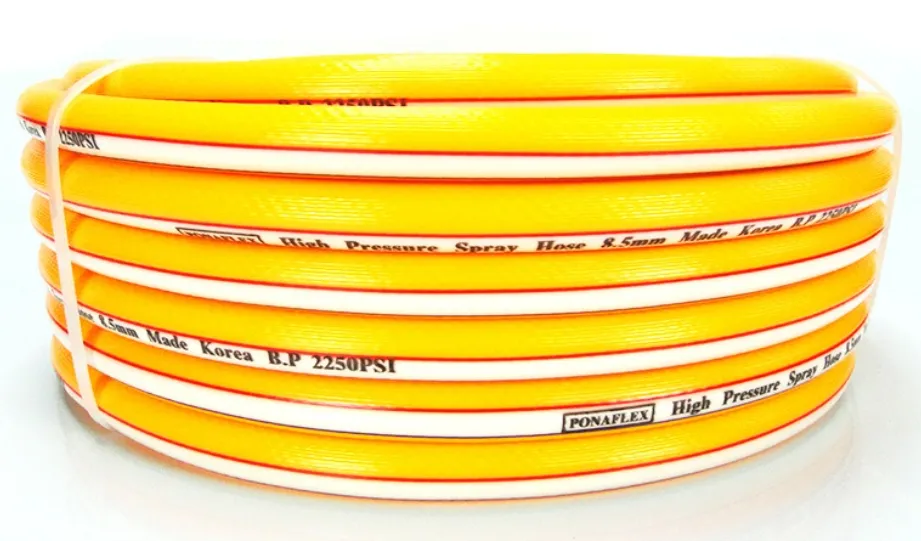Understanding Different Sizes of Layflat Hose for Various Applications and Projects
Understanding Layflat Hose Sizes and Their Applications
Layflat hoses are a versatile type of flexible hose widely used in various industries, including agriculture, construction, mining, and firefighting. They are designed to transport liquids and slurries efficiently, primarily because of their flat design, which allows for easy storage and transportation. When selecting a layflat hose, one of the most critical factors to consider is its size. This article will explore layflat hose sizes and their applications, helping you make informed decisions for your projects.
What Are Layflat Hoses?
Layflat hoses are constructed from reinforced synthetic materials, making them durable and resistant to pressure. Unlike traditional hoses that are round and rigid, layflat hoses collapse when not in use, taking up significantly less space. This design is particularly advantageous when dealing with long-distance fluid transport across various terrains, as they can easily be rolled out and laid flat on the ground.
Understanding Hose Sizes
Layflat hoses come in various sizes, typically measured by their nominal diameter and length. The most common diameters range from 2 inches to 12 inches (50 mm to 300 mm) or more. The chosen diameter often depends on the amount of fluid being transported and the distance the fluid needs to travel. For instance, a larger diameter hose is ideal for high-volume applications such as agricultural irrigation, while smaller sizes might suffice for less demanding tasks.
Popular Sizes and Their Applications
1. 2 to 4 inches (50 to 100 mm) These smaller hoses are commonly used for medium and low-pressure applications, such as garden irrigation systems, draining pools, and light construction tasks. They are easy to handle and suitable for projects that require flexibility.
2. 6 inches (150 mm) This size is often used in industrial applications, including dewatering construction sites and wastewater management. Its diameter allows for efficient transport of larger volumes of water, making it a popular choice in mining and agricultural environments where significant amounts of water are needed.
layflat hose sizes

3. 8 inches (200 mm) and above For heavy-duty applications, such as firefighting or large-scale agriculture, hoses of this size are employed. They can transport a higher volume of liquid, making them suitable for challenges requiring quick and effective water delivery. Their robustness makes them ideal for high-pressure situations, ensuring durability and longevity.
Factors to Consider When Choosing Hose Sizes
When selecting the appropriate layflat hose size, consider the following factors
- Flow Rate Determine the required flow rate for your application. A larger diameter will facilitate a higher flow rate, which is essential in time-sensitive tasks such as firefighting or agricultural irrigation.
- Length of Hose Consider the distance the hose needs to cover. Make sure to choose a hose long enough to reach from the water source to the intended destination without unnecessary bends that could impede flow.
- Pressure Requirements Different applications demand different pressure ratings. Ensure the hose’s pressure rating matches or exceeds the needs of your project.
- Compatibility with Accessories Check that the fittings, connectors, and other accessories you intend to use are compatible with the hose size you choose.
Conclusion
In summary, layflat hoses are an invaluable tool across various industries, with sizes that cater to a wide range of applications. Understanding the significance of hose size and how it relates to your specific needs will ensure efficient and effective fluid transport. Whether you are in agriculture, construction, or emergency response, selecting the right layflat hose size plays a crucial role in the success of your operations. Always consult with professionals or suppliers to achieve the best results for your specific requirements.
-
Unrivaled Performance and Applications of PU Pneumatic Hoses and TubesNewsJun.11,2025
-
The Transparent World of Industrial Tubing and Hosing SolutionsNewsJun.11,2025
-
The Intricate World of Pneumatic Conduits: Tubes and HosesNewsJun.11,2025
-
The Dynamic Landscape of Pneumatic Conduits: Unraveling Key ComponentsNewsJun.11,2025
-
The Diverse Applications and Significance of Transparent PVC TubingNewsJun.11,2025
-
High - Pressure Pneumatic Tubing and Systems: An In - Depth LookNewsJun.11,2025














